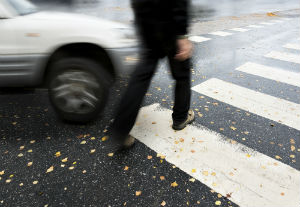 In 2015, 150 pedestrians were killed in accidents across Illinois, bringing the total to 18 percent more than 2014. Almost one third of these deaths occurred in Chicago, where the city’s pedestrian fatality rate increased 31 percent versus the previous year.
In 2015, 150 pedestrians were killed in accidents across Illinois, bringing the total to 18 percent more than 2014. Almost one third of these deaths occurred in Chicago, where the city’s pedestrian fatality rate increased 31 percent versus the previous year.
Across the country, there were 2,368 pedestrian fatalities in the first six-month period of 2015. During the same timeframe in 2014, only 2,232 pedestrian deaths occurred.
In light of the increasing pedestrian fatality rate in Illinois and the rest of the country, the Illinois Department of Transportation (IDOT) is reminding motorists to exercise caution when driving and to pay attention to pedestrians. Pedestrians are also urged to be cautious when crossing roadways. Crosswalks should always be used, and pedestrians should always be alert when approaching an intersection.
Every traveler, whether by foot or by car, should pay full attention to their surroundings. By following traffic laws, avoiding distraction, and driving defensively, motorists can lower the risk of fatal traffic accidents.
Pedestrian and motorist distraction is a dangerous problem. According to the Governors Highway Safety Association, distracted drivers and pedestrians likely contributed to the rise in pedestrian fatalities between 2009 and 2013, following decades of consistent decline.
The Illinois State Police Department also urges motorists to stay alert in the event their vehicle stalls or breaks down. Too often motorists are hit by another automobile when exiting their vehicles or waiting outside the vehicle for assistance. To stay safe, drivers should call 911 for assistance and all vehicle occupants should remain inside the vehicle while awaiting help.
Was someone you love killed in a pedestrian versus automobile accident? If so, you may be entitled to compensation – GWC Injury Lawyers will fight to maximize your compensation for medical bills, funeral expenses, and pain and suffering.
<< BACK TO BLOG POSTS